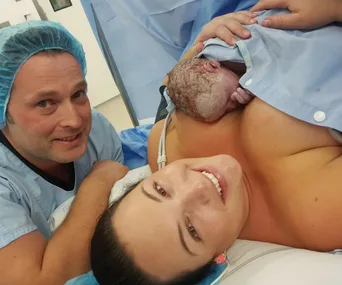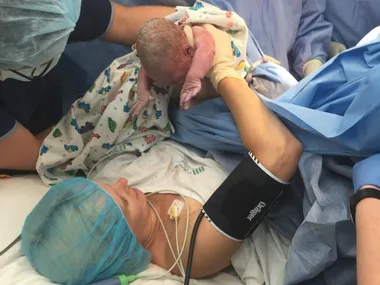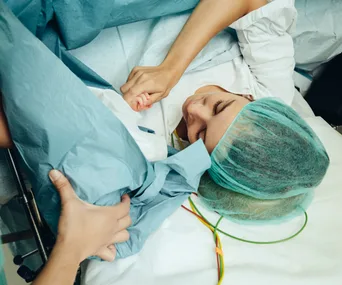Maternal-assisted births, also known as Positive Caesareans, allow mums to play an involved role in the delivery of their child.
How does it work? During a c-section delivery the obstetrician and surgeons begin the procedure, and once the baby’s head is out, the mother can reach down, grab their child under the armpits and pull them up onto their chest.
As almost one-third of births in Australia result in a caesarean, this procedure can help mothers who are medically advised against giving birth “naturally” but who still want to feel involved in the birth.
A maternal-assisted delivery is not an option that can be routinely offered to all mothers-to-be, and never for an emergency caesarean, and is also dependent on finding an obstetrician who will perform the procedure.
At Westmead’s public and private hospitals Dr Andrew Pesce has been involved in about 12 maternal-assisted caesareans.
“When you ask women what makes them most upset about having a c-section and how we can help with that, it’s always about it being a very clinical thing,” explains Andrew.
“[Maternal assisted caesareans] may give women some sense of being involved in a very personal process,” he says.
“It’s not always possible, but there is no harm in asking nicely and respectfully.”
Mother-of-four, Bec Secomb, recently delivered her own baby via caesarean section. After the caesarean deliveries of her three sons, Bec had wanted a vaginal birth without intervention for the birth of her fourth child.
While women after often encouraged to try a vaginal birth after a c-section (known as a VBAC), the medical advice for Bec following three caesareans was to have a fourth one.
At 36 weeks pregnant and her baby’s growth slowing considerably, the safest option was to schedule a caesarean for 10 July.
By chance, a day before the procedure, Bec and her husband met Dr Thevakumar in the elevator at Sydney’s Northern Beaches Hospital.
The obstetrician had previously performed four maternal-assisted caesareans.

Bec helped deliver her daughter via caesarean section.
(Image: Instagram/ @becsecomb)On delivery day, Bec had a nerve blocker to numb all feeling from her ribs down and when she heard her obstetrician say, “Okay, you can reach down now,” she used her arm strength to lift her daughter up out of her belly, cradling her small head in her hands.
“That first feeling of my hand on her head … she was so warm, it was just amazing,” said Bec.
After pausing to allow the medical team to unwound the umbilical cord from her daughter’s neck, Bec continued to lift up her daughter.
“They said ‘okay, keep pulling’ and I pulled her straight up onto my chest.”
For Dr Thevakumar, the chance to give women the option of being involved in their caesarean birth is really special.
“Every birth is beautiful, but with these births…. the feeling is indescribable,” he says.



